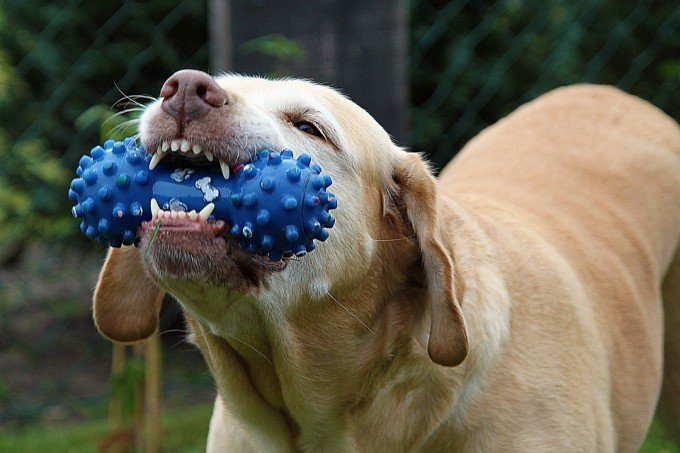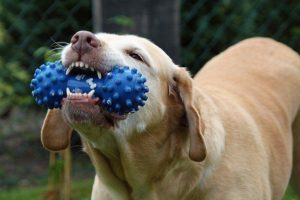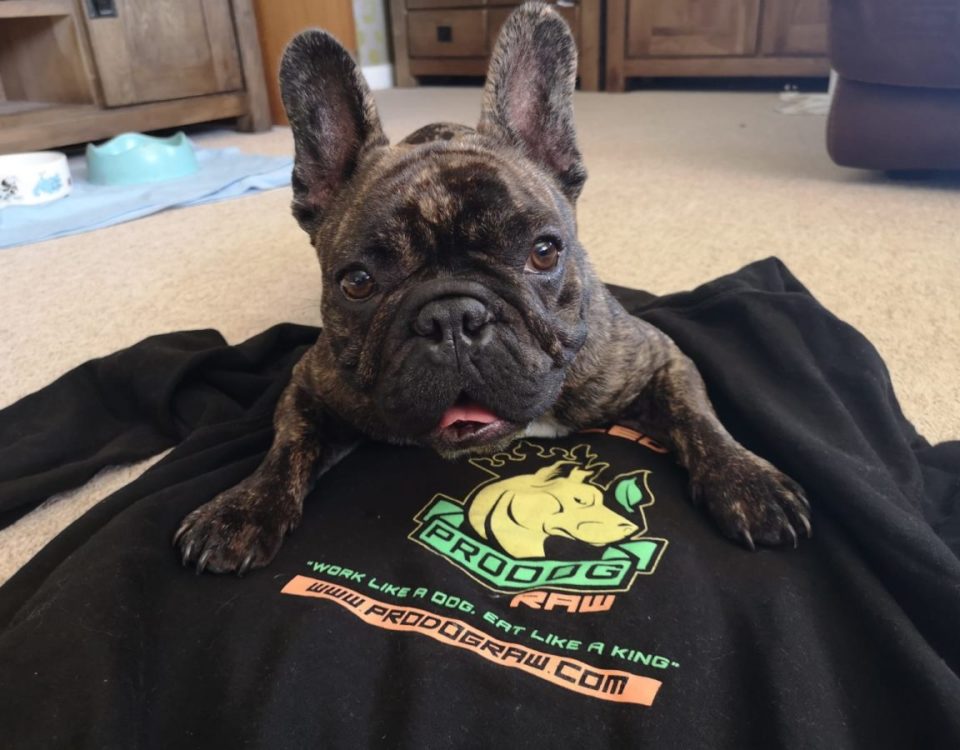
Dog Ear Infections
February 20, 2020
Sponsoring Ellie, Archie & Ava
February 20, 2020Dog Toys


Dogs are remarkably intelligent and sentient animals, and capable of feeling and acting on a range of emotions. They are also capable of experiencing fun, which is commonly manifested as partaking in activities that seemingly have no inherent benefits. There are many ways in which your dog can experience fun and pleasure. Some of these involve others dogs, i.e. playing and socialising as a group or pack. Alternatively, this may simply be spending time with a favourite human, who chooses to utilise various toys. There are a number of different type of dog toys available which we will give you an overview of along with other factors to be aware of.
Dog toys target specific needs
Apart from offering forms of fun and other relief, dog toys tend to target specific needs or behaviours, and channel them into non-destructive manifestations. The two most common behavioural issues which can be effectively channelled into using toys are the prey drive, and oral fixation, i.e. chewing and holding things in the mouth. Toys and puzzles can also be useful in providing dogs with mental engagement and stimulation, especially in the case of more intelligent and driven breeds such as the Belgian Shepherd and Border Collie. As dogs are descended from wolves, they still have varying residues of predatory instincts which is known as a prey drive. Prey drive manifests itself as a desire to chase, bite, and attempt to kill items that move in a manner which resembles living food sources. This also overlaps with oral fixation and a desire to chew.
They need to be able to fulfil their natural behaviours
For any animal to be as happy and well-stimulated as possible, it should be allowed to perform natural behaviours. For dogs this includes, but is not limited to chewing, utilising their sense of smell to process the world around them, exist in a social group, and chase and kill. If they are not allowed to perform these behaviours, or at least close approximations of them, then their mental health suffers. Stereotypical behaviours such as pacing, spinning in circles, excessive barking, and even self-harm may be observed as a result of this. Toys play an important role in keeping dogs mentally engaged and happy, and their importance should not be underestimated.
Dogs love a ball
One of the most common and popular dog toys which are commonly available are balls of various kinds. When a ball is thrown at speed, it triggers the prey drive in most, giving them a strong urge to chase and collect it in their mouths. Building this into games of fetch is an excellent way to channel dogs’ natural prey drives, as well as promoting different types of exercise in addition to normal walking. Games of fetch and chasing encourage them to sprint, promoting higher intensity cardiovascular activities. While it is not uncommon to see regular tennis balls and even footballs being used as dog toys, it is best to avoid this. These balls are not designed for repeated chewing, especially by dogs with large and powerful jaws. As such, it easy for them to become damaged, and potentially injure your dog who could ingest its parts. Balls specifically designed for dogs are commonly available online, and much safer options.
Channelling a dog’s prey drive
Perhaps surprisingly, there are a wide variety of ball-based toys which dogs are able to enjoy. Some are grooved which food can be placed in, while others squeak when chewed and shaken. When a dog has to work for its food and nutrition, it is often more satisfied, and relaxed as it has had to undergo a degree of mental exertion. Similarly, toys which squeak when chewed and shaken representing the motions of hunting and killing rodents. This makes them particularly suitable for breeds created for vermin control purposes, i.e. the Jack Russell Terrier. Such toys are also beneficial as they allow a dog’s prey drive to be channelled in a safer way than hunting and killing potentially dangerous vermin, and is also more hygienic.
Give a dog a bone…
Chew toys are extremely popular, and can either be organic or inorganic. An organic chew toy of sorts is the classic bone. Because of their inherent meatiness, their scent is appealing, and dogs commonly love them. The effort chewing bones entails is often deeply stimulating, and has a calming effect. However, safety should be properly considered, and it is very important to only allow them access to uncooked bones, as cooked bones have a tendency to splinter dangerously. ProDog Raw offers a range of bones and other chew toys which many dogs have enjoyed, and these can be found in our “Raw Treats” section. Kongs are another popular chew toy. Made out of rubber, they come in a variety of sizes, so can be enjoyed by all kinds of dogs. Kongs are also spherical, so can be thrown like a ball and used for games of catch. However, as they age, strong rubber toys such as the Kong have the potential to damage their teeth, so are most appropriate for younger dogs.
Other natural ‘chew’ alternatives
As well as the ball, the Kong and bones that are suited to your dog’s age and size, there are also a number of other natural alternatives to consider. Deer antlers are an excellent stimulant for dogs which also double as a great way to keep their teeth clean. Chewing on a deer antler is certainly a good way to keep your canine companions occupied and allow them to do what nature dictates. For puppies, the pain of incoming teeth can be alleviated by chewing while in older dogs it not only keeps jaws strong and teeth clean, it can also help to relieve stress, boredom and anxiety. The benefits therefore are multiple. Calves hooves are another great natural chew toy that can be safely ingested and easily digested. In fact, you can have some fun, especially if you are a raw feeder. If you have a fast eater, you can fill the hoof with raw and let the dog enjoy retrieving it before they get to work on the hoof. 100% British cow hooves are also extremely nutritious and great fed alongside a natural raw diet.
The Dog toys to avoid
While chew toys are encouraged and necessary as part of a dog’s play routine, it should be observed that there are some toys that should be avoided. Anything made from rawhide is an absolute no. While they are commercially available in pretty much every pet store, they are not only a choking hazard but are made from questionable ingredients with little or no nutritional value to the dog. You should also be mindful of toys that your dog can rip apart that could also potentially cause harm. Pigs ears, while a popular choice with many, are coated in a substance that is hard for dogs to digest and if they are sick as a result, the staining can be hard to remove. Therefore, you should also choose a more natural and nutritious option.
Increase your bond through productive play
Dogs primarily learn associatively through conditioning, and to this end, toys can often play an important role in training, control, and bonding. If a dog forms positive associations with a particular toy, then this can be used as an incentive for following commands during obedience training. As they become more obedient, owners can gain higher levels of control over them, and a good way of developing this is through the “leave” command. While seemingly simple, being able to command your dog to leave and drop something is extremely important, and should be a training priority.
Additionally, if a dog associates you with fun because you play with it using toy-driven games, it will increase the strength of your bond with it.
This article only offers just a few examples of toys that dogs may benefit from. There are many others, and we would be more than happy to advise on how they can be best utilised to benefit your dog, and also help develop your relationship with your canine companion.


